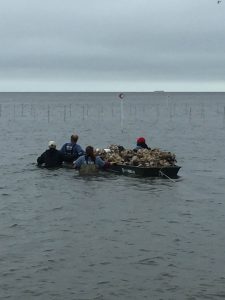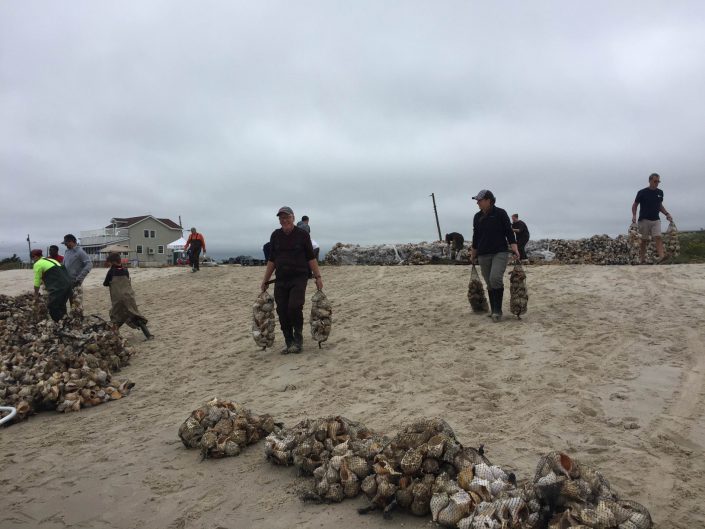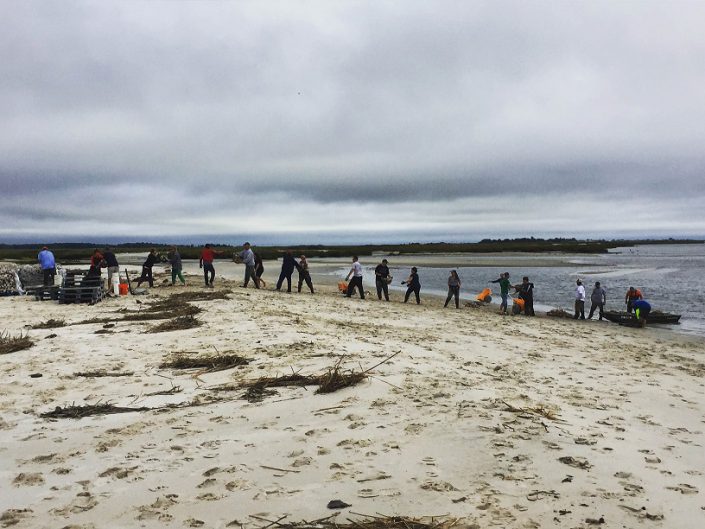Reef dedication, seining to help celebrate Veterans Day on Delaware Bay
Oyster reef to be dedicated to New Jersey Veterans at second annual event
By Emily Hofmann, Project Coordinator
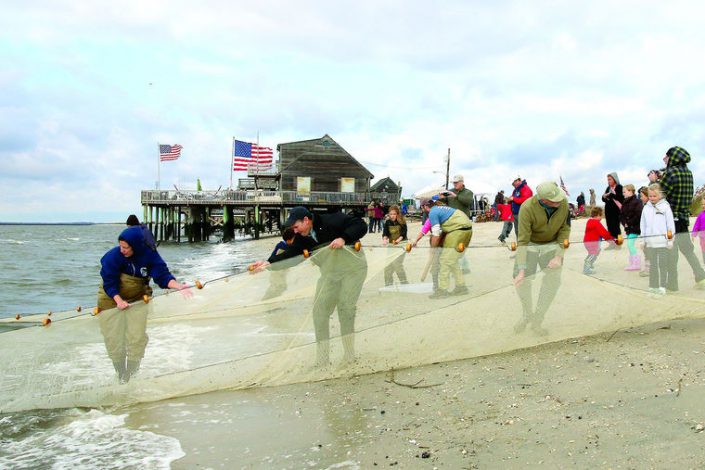
You and your family are “whelk-come” to join American Littoral Society and Conserve Wildlife Foundation and for our 2nd Annual Veterans Day on the Bay on Saturday, November 12 from 11:00 AM -2:00 PM at Moores Beach on the Delaware Bayshore! In April, we held our 2nd Annual Shell-A-Bration where proud volunteers braved the elements and helped build an oyster reef at Moores Beach.

The 1st Annual Veterans Day on the Bay was held on November 11, 2015 at South Reeds Beach. The oyster reef was dedicated to all veterans and highlighted veteran involvement in the effort to restore New Jersey’s Delaware Bayshore. Event attendees honored their own military veterans by inscribing that special person’s name on a shell and placing that shell on “Veterans Reef.”
This year we’d like to continue to show our appreciation and mark the progress we’ve made by dedicating another reef to a specific military branch.
Please join us for the 2nd Annual Veterans Day on the Bay, which will feature:
- Raw oysters and fare from Spanky’s BBQ
- Beach Clean-up
- Seining and marine wildlife study
- Arts and crafts for children
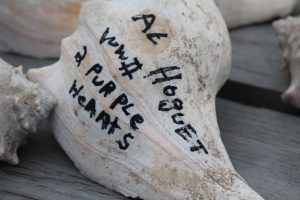
Help us study the wildlife living in this new reef with hands-on, interactive marine science activities like seining and species identification!
The highlight of the event will be the dedication of Moores Beach oyster reef in honor of our military veterans. Attendees are invited to honor their own military veterans by inscribing that special person’s name on a shell and placing that shell on the reef.
This family fun day and volunteer event will be held from 11:00 AM – 2:00 PM; with the reef dedication ceremony taking place at 12:30 PM. Veterans Day on the Bay is rain or shine. The celebration will be a picnic-style event, so please bring blankets and chairs.
Join us at Moores Beach, at the end of Moores Beach Road (which intersects with NJ Route 47 near Delmont United Methodist Church) Maurice River, New Jersey, 08314.
RSVP appreciated to Quinn Whitesall, quinn@littoralsociety.org or Emily Hofmann, emily.hofmann@conservewildlifenj.org by November 7.
LEARN MORE:
Emily Hofmann is a Project Coordinator with Conserve Wildlife Foundation.
